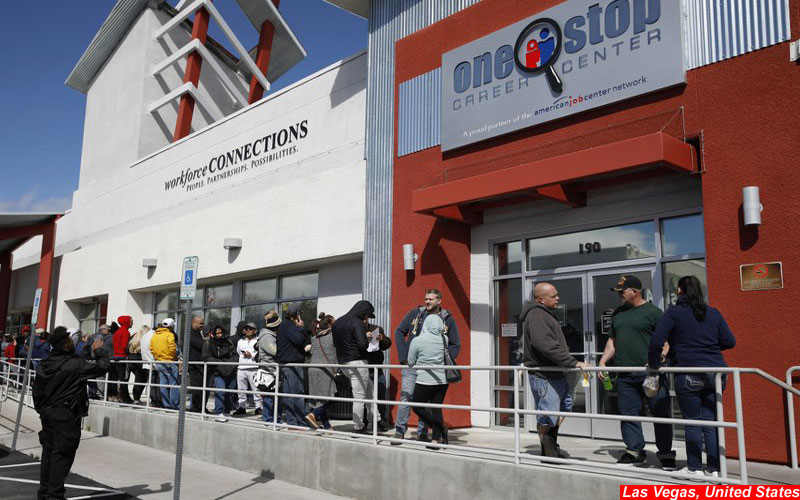
GENEVA (AP) — More than one in every six young workers have stopped working during the coronavirus pandemic, the U.N. labor agency reported Wednesday, warning of long-term fallout that could lead to a “lock-down generation” if steps aren’t taken to ease the crisis.
The International Labor Organization, in its fourth edition of its report on the impact of the pandemic on jobs, says that work hours equivalent to 305 million full-time jobs have been lost due to the COVID-19 crisis, with it being felt most sharply now in the Americas, an epicenter of the outbreak currently.
ILO Director-General Guy Ryder warned of the “danger” that young workers aged 15 to 28 in particular could face, from inability to get proper training or gain access to jobs that could extend well beyond the pandemic and last far into their working careers.
“They have been basically ejected from their jobs,” he said, referring to the one in six youths who have stopped working. “There is a danger of long-term exclusion. The scarring of young people who are excluded from the labor market early in their careers is well attested by the literature.”
“So I don’t think it is giving way to hyperbole to talk about the danger of a lock-down generation,” Ryder added.
Of those still working, nearly one in four – or 23% – have seen their working hours reduced, the ILO said, pointing to a “triple shock” faced by young workers: Destruction of their work, disruption to their training and education, and obstacles moving in the work force or entering it in the first place.
“We run the risk of creating a situation — in this sort of snapshot of pandemic — which will have lasting effects,” Ryder told a virtual news conference from the ILO headquarters. “A lot of young people are simply going to be left behind in big numbers.
“And the danger is — and again, this is the lesson of past experience — that this initial shock to young people will last a decade or longer than a decade,” Ryder said. “It will affect the trajectory of working people, young working people, throughout their working lives.”
The ILO said policymakers can take steps to ease the fallout, such as by providing “guarantees” to protect employment and skills, and rolling out COVID-19 “testing and tracing” measures that can help improve workplace safety and get people back to work faster and more safely.
The report is based on a survey that te ILO and its partners conducted on youth employment. The agency says young people were already in a precarious position relative to other age categories, with work rates still below those before the 2008 economic crisis.
Of the 178 million young workers employed around the world, more than 40% were in “hard hit sectors when the crisis began,” such as food services and hospitality industries, the ILO said. More than three-fourths of young workers are in “informal” jobs – including 94% of young workers in Africa alone.
____
Newsroom | theworldmail.co.uk
Source/Contribution/Photo Credit by Associated Press






